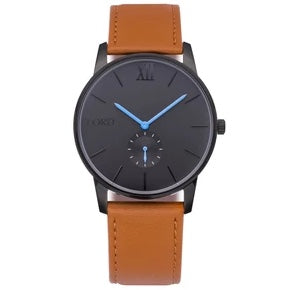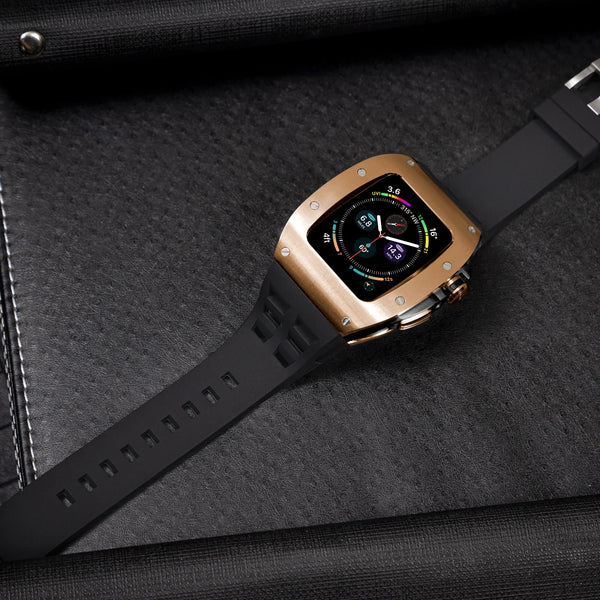A History of the Wristwatch
As we begin the New Year here at Lord Timepieces we could not be more excited about the new watch trends set to take centre stage in 2017. With new styles and sizes promising to grace our wrists as a result of the increasing innovation and creative flare of our modern world, it has got us reflecting on the past and how far the wristwatch has come. You may not realise it but timepieces and their styles have evolved significantly over time. When was the wristwatch, that we now can’t live without, first invented and how has it changed? When did they come into fashion and have they always been worn by both genders?

To answer all these questions and to help understand how the world of wristwatches has evolved now 2017 has begun, at Lord Timepieces we've put together a brief history of the wristwatch...
1571: The First Wrist-Watch Recorded
It wasn’t until 1656 that clocks became ‘accurate’ and included a minute hand. For a long time the primary problem to tackle when it came to creating a wristwatch was that it was near impossible to design a clock so small that functioned accurately at the same time. Thus, although probably inaccurate, it is believed the first luxury wristwatch or rather “arm watch” belonged to Queen Elizabeth, gifted to her by Earl Robert Dudley in 1571 and lavished entirely with jewels.
1700-1800: The Watch-Bracelet as a Lady’s Accessory
After Queen Elizabeth’s gift we do not see the wristwatch emerge again until the late 1700s and early 1800s in Europe. However, they did not take traditional wristwatch form, instead they were bracelets with small winding clock faces embedded in them; an aristocratic lady's accessory. These were seen primarily as female accessories because the strap resembled a bracelet. During this period bracelets were only to be worn by women, thus wristwatches were not worn by men in fear of them appearing feminine. Instead men who wanted to keep time stuck to the beloved pocket watch that originated in 1675 and the very few women who decided to wore fashionable watch bracelets (later to become the wristwatch). It would be a long time before wristwatches became widespread, popular and an essential part of a man’s wardrobe.
WW1: The Emergence of the Male Wristwatch
Although wristwatches were recorded before the twentieth century as bracelets, the idea of wearing them did not become popular until WW1. Due to the longstanding popularity of the pocket-watch, they were often made fun of and understood to reflect femininity. However in the trenches of WW1, it was not practical to search through your pockets to locate your pocket-watches when your hands were full in times of urgency and danger. Instead, the simple leather strap wristwatch proved a far more practical alternative allowing synchronisation and coordination between soldiers on the front with only one simple glance. By the time war ended, thousands of men returned home from all over Europe sporting a wristwatch instead of carrying a traditional pocket watch and this triggered a huge surge in their popularity. Wristwatches were no longer seen a feminine accessory and became fashionable both genders. From hereon in their commercialisation was inevitable.
The 1970 Quartz Revolution
For much of the twentieth century, after the wristwatch’s rise to prominence in WW1, the main developments in the wristwatch came in accuracy and movement. In 1969 the introduction of the quartz watch was truly revolutionary in terms of technology. Watches could be driven by a battery powered oscillator circuit using digital counters as opposed to the balance wheel. By 1970 this digital clock had taken off. A wristwatch was no longer simply a leather strap with a clock face embedded in it, these once simple faces and leather straps started to take on new and alternative styles and forms. As the quartz movement wristwatch became an item high in demand due to it's innovation, they started to be produce more and more.
The Twenty-First Century Variety
At the start of the twenty-first century the wristwatch successfully it was here to stay, that their popularity was not just confined to a previous century. Since, society has witnessed wristwatch fashions beginning to change more frequently than ever before. Indeed, watches have now become an accessible, affordable and essential accessory in everyone’s wardrobes with many people owning multiple watches for different occasions. There are more styles than imaginable and this has resulted in more choice: men and women can now choose a watch to match their own individual personality. For example, men have the choice of styles with a classic leather strap like our Noble Rose Gold Tan or those with skeleton styled watch faces such as our Oxford Watch. The choices are now endless, so much so that choosing a watch can seem like a military operation!

2017 and Beyond…
Today, as we embark into 2017, wristwatches continue to grow and develop with high quality craftsmanship at the core of most designs. 2017 is set to see movement away from the classic leather strap watch, with preference given to the modern looking watch featuring innovative materials like our Bolt Watch with its smooth silicone strap. Experts are also predicting a return to larger watch faces and straps in steel, making our Cavalier Watch the perfect investment for the new year ahead of you.

So as we purchase new wristwatches for 2017, spend a moment and celebrate how far our timepieces have come.




